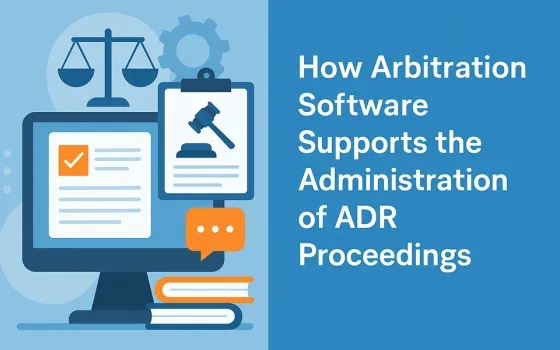Abstract:
Achieving an Ingress Protection (IP) rating is a critical requirement for electronic devices designed to operate in challenging environments. This whitepaper outlines the different methodologies for designing and developing devices that meet required IP standards, focusing on both theoretical frameworks and practical implementation. It covers the different techniques with respect to specific interfaces, selection of materials and sealing methods.
The document emphasizes critical design considerations such as gasket integration, enclosure geometry, material compatibility, LED guide sealing, and sealing of connectors and cables. These elements are crucial for achieving long-term durability and IP protection. By following the methods presented, manufacturers and designers can enhance product reliability, reduce certification failures, and build customer trust. This whitepaper serves as a comprehensive resource for engineers and decision-makers aiming to achieve IP compliance efficiently and cost-effectively.
Introduction:
In the fast-paced world of technology, electronic devices are often required to perform in challenging environments where they face exposure to dust, water, and other external elements. Ensuring these devices meet Ingress Protection (IP) ratings is vital for their durability and performance. These ratings act as standardized measures of protection against such intrusions, making them essential for market success.
For manufacturers and designers, achieving the appropriate IP rating goes beyond compliance — it directly impacts product reliability and consumer trust. However, the process involves numerous complexities, including selecting the right materials, employing effective sealing techniques, designing robust enclosures, and passing stringent testing protocols. Missteps in any of these areas can lead to failed certifications, increased costs, and diminished customer confidence.
This white paper offers a detailed guide on achieving IP ratings for electronic devices. It addresses critical aspects such as material selection, enclosure design, and assembly methods to meet IP standards effectively. By following these practices, manufacturers and designers can streamline development, enhance reliability, and ensure compliance with ease.
Whether you are an engineer, product designer, or industry decision-maker, this resource is designed to help navigate the challenges of designing and producing IP-rated devices.
The IEC 60529 standard defines IP ratings, offering a classification system for enclosures that protect electrical equipment from solid objects, dust, and water ingress. The rating considers not only the enclosure itself but also elements like sealing methods, lid fastening, and cable entry points.
Understanding IP Ratings:
IP ratings are designed to specify a device's resistance to ingress by solid particles and liquid penetration. These ratings consist of two numbers, each representing a distinct level of protection.
- 1st Digit (X) (Protection against Solid Particle): Range - 0 (no protection) to 6 (complete protection from dust).
- 2nd Digit (X) (Protection against Liquid Ingress): Range- 0 (no protection) to 8 (protection from continuous immersion).
- Optional Letters (Supplementary & Additional Letters): Additional information about protection or specific use conditions.
Arrangement of IP Code

-
If a specific characteristic numeral is not applicable, it is replaced by the letter "X." For example, IP4X indicates protection against a 1.0mm probe is required, with no requirement for water ingress protection

 Elements of IP and their meaning
Elements of IP and their meaning
Design considerations for achieving IP rating:
The design of the enclosure, including the placement of buttons, LED Guides, connectors, cables and ventilation, plays a vital role in determining the IP rating. Proper sealing techniques and methods are essential to maintain the IP rating. This includes careful design of gaskets, use of adhesives, and other sealing methods.
Sealing techniques for different interfaces:
-
Top and Bottom
-
Button
-
LED Guide
-
Wire Grommet/ Gland
-
Connectors
-
Ventilation
1. Top-Bottom:
When designing an enclosure consisting of two halves, achieving a secure, durable, and functional assembly is critical. Here are key considerations and methods for effectively dealing with the two halves of an enclosure:
-
Tongue-and-Groove Joints: This is also known as lip and groove and is a widely used design feature in enclosures for IP-rated devices to ensure a tight, secure seal(O-Ring/Gasket) between two halves of the enclosure. This joint is particularly effective in preventing the ingress of dust, water, and other contaminants while providing mechanical strength and alignment. Below are some cross-sections of the lip and groove design; designers can select suitable geometry based on the thickness, space availability and more importantly as per the manufacturability.

Design calculations of gaskets for lip and groove.

|
Gasket Dia.
|
0.9
|
mm
|
|
X
|
1
|
mm
|
|
y
|
0.7
|
mm
|
|
Gasket Area
|
0.63585
|
mm^2
|
|
Grove Area
|
0.7
|
mm^2
|
|
Compression
|
22.2222222
|
%
|
|
Shore A
|
35
|
|
Note: The groove area should be slightly larger than the gasket's cross-sectional area to accommodate gasket deformation during compression. Gasket compression should be in the range of 20% to 30%.
-
Gaskets: This involves utilizing continuous gaskets made of materials like EPDM, silicone, or neoprene for creating a reliable seal. These materials are durable, weather-resistant, and retain flexibility over time. Silicone (for its wide temperature range and flexibility), EPDM (for weather and UV resistance), Polyurethane (for durability and mechanical resistance), Neoprene is a cost-effective material for general-purpose applications where moderate environmental and mechanical resistance is sufficient.
|
Adhesive Type
|
Key Properties
|
Common Applications
|
Examples
|
|
Silicone Adhesives
|
Flexible, temperature resistant, UV resistant
|
Sealing gaps, waterproofing, bonding components
|
Dow Corning 3140 RTV, Loctite 5900 RTV Silicone
|
|
Epoxy Adhesives
|
Strong bonding, chemical and heat resistant
|
Encapsulating components, structural bonding
|
3M Scotch-Weld DP420, Loctite 9462
|
|
Acrylic Adhesives
|
Fast curing, high bonding strength, UV resistant
|
Attaching covers, sealing gaskets
|
3M Scotch-Weld DP810, Permabond ET500
|
|
Polyurethane Adhesives
|
Flexible, moisture-resistant, vibration resistant
|
Bonding, sealing outdoor IoT devices
|
3M Scotch-Weld DP604NS, Loctite 406
|
|
Pressure-Sensitive Adhesives
|
Easy to apply, semi-permanent, consistent sealing
|
Mounting screens, temporary/semi-permanent bonding
|
3M VHB Tape, Tesa 4965
|
2. Button Interface: The buttons on an enclosure must allow for actuation without compromising the ingress protection.
-
Over-molded Seals: The buttons are molded with an elastomer like TPU (thermoplastic polyurethane) or silicone to form an integrated seal. This process creates a seamless, integrated seal that eliminates the need for additional gaskets or adhesives. Over-molded seals provide excellent protection against dust, water, and contaminants, making them ideal for IP-rated enclosures. The integration of the elastomer ensures consistent sealing performance, even under repeated use, while also simplifying the assembly process by reducing the number of components. This method is particularly effective in devices where durability and sleek design are critical.


<source: https://promwad.com/news/sealing-of-enclosures-part-1>
-
Membrane Seals: Thin membranes cover buttons, allowing actuation while maintaining a waterproof barrier. They feature a top overlayer made of polyester or polycarbonate, which provides a smooth, customizable surface for graphics and labels. Beneath the overlay, conductive circuits are printed on a flexible substrate, enabling electrical actuation when a button is pressed. The sealed design protects against dust, water, and chemicals, making them suitable for harsh environments and compliant with high IP ratings. These keypads are widely used in medical devices, industrial equipment, and consumer electronics, resisting wear, easy cleaning, and reliable performance in challenging conditions.


Source: https://www.takachi-enclosure.com/
-
Boot Seals: Rubber boots are protective rubber covers designed to encapsulate buttons or switches, providing a barrier against dust, water, and other contaminants. Made from durable materials like silicone or EPDM rubber, these seals maintain the functionality of the button while protecting it from harsh environmental conditions. They are commonly used in industrial equipment and outdoor devices where reliability in extreme conditions is essential. Boot seals also enhance the durability and lifespan of buttons by shielding them from wear and mechanical stress.

source: APM HEXSEAL
-
Adhesive Sealing: Strong adhesives are used to create a permanent, water-resistant seal around the button edges. Several types of adhesives may be used, with specific curing processes and temperature ranges.
 In this design approach, a plastic button is precisely located and assembled with a silicone rubber component, which is adhered to the enclosure surface using a suitable adhesive, such as Loctite 406. The elastic properties of the silicone allow the plastic button to move freely within the available space while maintaining a secure seal. This design ensures that the plastic button remains in direct contact with the actuator of the tactile switch, providing excellent tactile feedback during operation. The combination of adhesive bonding and the flexibility of silicone results in a reliable, durable, and responsive interface, ideal for achieving both functionality and environmental protection in IP-rated devices.
In this design approach, a plastic button is precisely located and assembled with a silicone rubber component, which is adhered to the enclosure surface using a suitable adhesive, such as Loctite 406. The elastic properties of the silicone allow the plastic button to move freely within the available space while maintaining a secure seal. This design ensures that the plastic button remains in direct contact with the actuator of the tactile switch, providing excellent tactile feedback during operation. The combination of adhesive bonding and the flexibility of silicone results in a reliable, durable, and responsive interface, ideal for achieving both functionality and environmental protection in IP-rated devices.
This method can be used in a product where the parts need to be recycled, and the use of wet adhesive is restricted. This approach allows easy disassembly of the parts without the use of any adhesive and without compromising the IP rating of the device. In this design a silicone rubber button is placed on the enclosure surface with the help of the locators, a plastic cover is used to exert pressure on the periphery of the silicone button, ensuring secure compression. The plastic cover is fastened to the enclosure using screws, effectively sandwiching the silicone button between the cover and the enclosure. A firm seal is achieved through the compression of the silicone button's lips at the interface between the button and the enclosure, providing a reliable barrier against ingress.

3. LED Guide Interface: The LED guide interface must transmit light while preventing ingress of dust or water.
Methods:



-
Over-molding: This involves the encapsulation of the LED guide and its connection with surrounding materials. In many illuminated devices, LED guides are typically made from transparent plastic, such as polycarbonate or acrylic, to ensure excellent light transmission. The surrounding material is often opaque plastic, like ABS or PBT, providing structural support and durability. Using a two-shot injection molding process, the transparent LED guide is molded first, followed by opaque plastic to create the housing. This design ensures precise alignment with the LED, minimizes light bleed, and enhances the overall durability and functionality of the component.

Source: https://www.opticsforhire.com/blog/using-an-overmold-for-a-light-pipe/
4. Wire Grommet/Gland: In IP-rated devices, wires often need to pass into or out of the enclosure, and this entry and exit points must be properly sealed to prevent dust and water ingress. To address this, wire grommets or glands are used, offering an effective solution for creating a reliable seal around the wires at these critical junctions.
Methods:
-
Cable Glands: They securely hold and protect cables entering enclosures, offering strain relief and environmental sealing. A threaded nut tightens against a flexible sealing material, compressing it around the cable for a secure, watertight fit. This design prevents dust, water, or debris ingress and reduces stress on cables, making them ideal for industrial equipment, outdoor devices, and IoT applications.


Source: https://midanelec.com/products_data_sheet/WISKA-CLIXX-en.pdf
-
Wire Grommets: To protect wires, cables, and cords from uneven or sharp edges of holes, these grommets are widely used in machinery panels and enclosures. Their flexible rubber design minimizes vibrations around sensitive components and allows for easy installation into holes.
-
Strain-Relief Grommets: Strain-relief grommets safeguard cables by minimizing stress from bending, pulling, or twisting and provide a secure seal where wires enter enclosures. They are flexible, easy to install, and help extend cable life, commonly used in electronics, machinery, and automotive setups to improve durability and safety.


Source: https://www.multicominc.com/product/multilink-fwp-8sc-12sp-plastic-fiber-wall-mount-box/
5. Connectors: Connectors play a crucial role in ensuring the integrity of IP-rated devices, especially at points where external components interface with the enclosure. To maintain the IP rating, connectors must provide a secure seal against dust and water ingress, whether in use (mated) or not (capped). When connected, the mating surfaces are designed with gaskets or O-rings to form a tight seal. When disconnected, protective caps or covers are used to prevent contaminants from entering exposed ports. These features ensure the device remains compliant with its IP rating, safeguarding performance, and reliability in harsh environments.
Methods:
-
Selection of IP rated connectors. If the device operates in clean, indoor spaces where dust and water exposure is minimal or when connectors are fully enclosed within the device’s housing and do not interact with the external environment, standard connectors may suffice, but for outdoor or industrial environment or where there is risk of dust and water ingress then IP rated connectors should be used which itself has sealing element O-Ring or Gasket. The device with IP rating IP54 or higher, IP-rated connectors are recommended.

-
Protective Caps: Protective caps with integrated seals are essential for safeguarding unused ports from contamination, moisture, and damage. They help maintain the integrity of the system by preventing dust and debris from entering, which can lead to malfunctions or reduced performance. Additionally, these caps ensure that the ports remain clean and ready for future use.

6. Ventilation: Ventilation is necessary for pressure equalization and thermal management in sealed enclosures. Also, in communication devices that use microphones, speakers and buzzers that are dust and waterproof, a vent should be included with the sealed enclosure that allows sound to transmit but not the dust water and other contaminant.

Methods:

These vents can provide IP 68 protection and have an operating temperature range of -40°C to +150°C.


Source: https://www.takachi-enclosure.com/assets/attachments/images/pmf_catalog.pdf
-
Acoustic Vents: In IP rated communication devices with microphones and speakers, acoustic vents allow sound transmission while preventing dust and water ingress; these vents are often constructed from materials such as PTFE, which repel both water (Hydrophobic) and oils (Oleophobic). This ensures they offer strong protection while maintaining high acoustic quality.

Source: https://www.gore.com/system/files/2024-08/PEV-219-TEC-R2-EN-AUG24_WEB.pdf
Standard IP Enclosures: Below are some sources of pretested standard IP Enclosures that can be used as per requirements.
1)Hammond Manufacturing: https://www.hammfg.com/
2) Takachi: https://www.takachi-enclosure.com/
3) OKW Enclosures: https://www.okwenclosures.com/en
4) ROLEC Enclosures https://rolec-usa.com/en/
5) BUD Industries https://www.budind.com/
6) Fibox: https://www.fibox.com/products
7) MacMaster: https://www.mcmaster.com/
Conclusion:
Designing IP-rated devices involves a meticulous approach to sealing every interface that could compromise protection against water and dust ingress. From top-bottom enclosures and button interfaces to LED guides and ventilation systems, each element requires tailored methodologies to ensure compliance with IP standards. By employing advanced techniques such as over-molding, gasket integration, and vent membranes, manufacturers can achieve reliable and durable protection. This comprehensive understanding of sealing techniques equips designers to create robust products that meet the demands of challenging environments while enhancing customer trust and market competitiveness.
Authors:

Devendra Singh Bisht is a Mechanical Design Engineer with 3 years of experience in product development and 6 years of experience in CAD modeling and concept designing. He has worked extensively on IP rated IOT devices including machine vision cameras, PTZ cameras and GNSS devices. He holds a B. Tech in Mechanical Engineering and is pursuing work integrated master’s program in Design Engineering. He has been recognized for his creativity, winning an award in Design challenge by SAE. His dedication to delivering quality solutions and continuous learning makes him a valuable contributor in Mechanical Engineering.

Bharat Kabugade is a Mechanical Design Engineer with a total of 5 years of experience in product design and development. He has worked on various automotive electromechanical products such as glow control units, regulators, and ignition coils, blow fan regulators etc. And IP-rated IoT devices, such as service devices, PTZ cameras, and GNSS Receiver. He earned his bachelor's degree in mechanical engineering from Pune University. He has a strong focus on quality and a passion for learning. He is a valuable professional in mechanical engineering.




















Comment
The guide provides essential information on obtaining IP (Ingress Protection) ratings for electronic devices, ensuring their durability and protection from dust and water. As consumer expectations for device longevity increase, manufacturers face pressure to meet higher IP standards. What are the key steps for organizations to ensure compliance with evolving industry norms while maintaining product reliability?